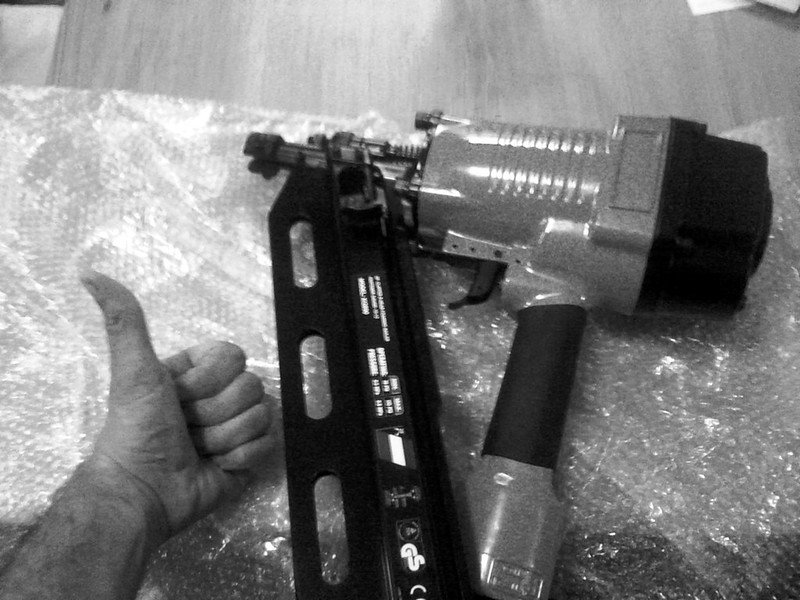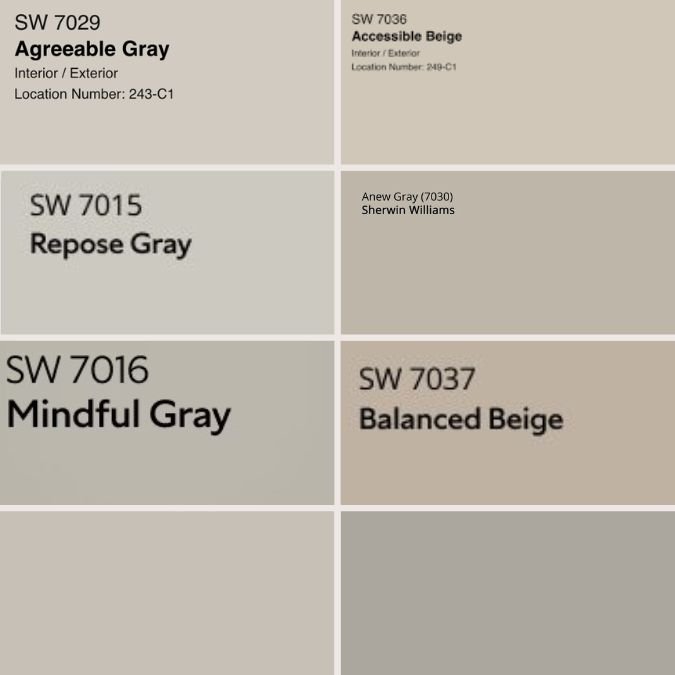If you’ve ever been on a construction site or even attempted a DIY framing project, you know a framing nailer can be your best friend. However, with terms like 15 degree, 21 degree, 28 degree, and 30 degree thrown around, it can get confusing fast when choosing the right tool.
So what do these degrees mean, and more importantly, how do they affect your work? Let’s get into this topic..
Understanding Framing Nailer Degrees
The framing nailer degree is the angle of the nail magazine to the body of the tool. This angle dictates nail compatibility, magazine size, and how effectively the tool fits into tight or awkward spaces.
15-Degree Framing Nailers:
15 degree nailers are known for their coil style magazine and are a go to for projects that require a lot of nailing, such as roofing and flooring. The round magazine allows for high nail capacity, often exceeding 200 nails, which means fewer interruptions for reloading.
As far as working in tight spaces, this design is perfect, but there are downsides with it. While it does have a coil magazine, the added weight to the tool causes it to be heavier to handle and the wire collated nails it employs are prone to rust when exposed to moisture.
21-Degree Framing Nailers:
21 Degree nailers are easy to use, yet powerful enough to be tried by both the DIY enthusiast and the contractor. These nailers use plastic-collated nails, which are widely available and relatively affordable.
These tools have a capacity of 60-70 nails, are simple to use and are appropriate for basic framing, deck building – and many other construction projects. However, the plastic collation is sometimes prone to shattering in the process, leaving debris in the way, and the smaller magazine will also need to be reloaded more often during big jobs.
28-Degree Framing Nailers:
Falling somewhere in between, 28-degree nailers are known for their versatility. They work with both wire collated and clipped head nails. They are a reliable option for framing projects, which need occasional access to narrower spaces.
However, these nailers are heavier than their 21 degree counterparts, and finding clipped-head nails may be difficult, depending on where you live.
30-34 Degree Framing Nailers:
30-34 degree nailers are excellent where space is tight and awkward and their steeper angle makes them more useful than 18 or 20 degree models. They use paper-collated nails and often have a higher magazine capacity, holding up to 100 nails.
Lightweight, these nailers are a favorite among professionals for intricate framing and remodeling tasks, and are also great for extended use. That said, the paper collation is more vulnerable to moisture, and the nails themselves can be pricier and harder to find than other types.
The Contenders: 15 Degree vs 21 Degree vs 28 Degree vs 30 Degree Framing Nailers

The degree angle—15, 21, 28, or 30—makes a huge difference in performance, usability, and the type of nails you can use.
We’ll break down the differences and crown the best framing nailer for different applications.
1. Accessibility
15-Degree: This nailer is compact enough to squeeze into tight spots thanks to the coil style magazine. Ideal for jobs like roofing and flooring, where space is limited.
21-Degree: Perfect for standard framing, but its longer, bulkier magazine makes it a poor choice for cramped areas.
28-Degree: As the steeper angle helps it fit into tighter spaces, it’s slightly more versatile than the 21-degree. But it’s not as compact as the 15 degree option.
30-Degree: The clear winner here. Its slender bod shape with steep angle allows this to be very handy in an awkward / tight corner.
Winner: 30-Degree
2. Nail Magazine Capacity
15-Degree: This is the king of capacity with a coil magazine that holds over 200 nails. Reloading is rare, which is a big time saver on large jobs.
21-Degree: It holds fewer nails, usually around 60-70, so you’ll be reloading often.
28-Degree: Similar capacity to the 21-degree, but slightly more due to its strip design.
30-Degree: It can hold up to 88 nails, offering a balance between capacity and portability.
Winner: 15-Degree
3. Nail Collation and Mess
15-Degree: It uses wire collated nails, which are durable and leave no mess behind.
21-Degree: Uses plastic collated nails. Hence could make small plastic shards when used, which can be messy.
28-Degree: It uses wire or plastic collation, depending on the model, but is still prone to mess if plastic is used.
30-Degree: They use paper collated nails that are mess free but are more sensitive to moisture.
Winner: For clean job sites, 30-Degree (or 15-Degree if durability is key)
4. Weight and Comfort
15-Degree: Due to its coil magazine, it is slightly heavier. Best for short bursts rather than extended use.
21-Degree: Moderate weight, but the heavier design can strain your arms during prolonged use.
28-Degree: A bit easier to handle over time as they are slightly lighter than the 21 degree.
30-Degree: The lightest option, designed with ergonomics in mind for professional-grade, extended use.
Winner: 30-Degree
5. Cost and Availability
15-Degree: Coil style nailers and their nails can be more expensive and harder to find in stores.
21-Degree: A common and inexpensive choice for general contractors.
28-Degree: Somewhat more expensive than the 21 degree with nails that may be harder to find in certain locations.
30-Degree: It’s slightly pricier than the 21-degree, but its nails are easier to find and reasonably priced, especially for professionals.
Winner: 21-Degree for Affordability and 30-Degree for Availability.
6. Suitability for Projects
15-Degree: Excellent for roofing, flooring and siding and works great in tight spaces.
21-Degree: Good option for general framing, deck building, and other simple construction use.
28-Degree: It works well for framing and for small scale works but isn’t as versatile as some other options.
30-Degree: A more versatile one, good all round for framing, detailed framing and professional work.
Winner: 30-Degree
The Top Contenders: 21° vs 30° – Let’s Settle This
The thing is, these nailers are like the Ford vs. Chevy of the nail gun world. Honestly, each has its die hard fans. Both do the job well. However, there are some real differences that may matter to you.
21-Degree Nailers: The Popular Kid
The 21 degree nailers are the Toyota Camry of framing nailers, reliable, widely available, and does the job without much fuss. Here’s what you need to know:
The pros of these nailers include a smaller magazine profile, which makes them easier to maneuver in tight spaces, a definite advantage for confined job sites. The nails are also cheaper, which is a nice cost saving perk that adds up over time. More brands are offering this type, so you’ll have a wider selection to choose from, and their lighter overall weight makes them comfortable for extended use. For most residential framing jobs, they’re perfect, offering a nice balance between efficiency and usability.
But there are some downsides to it. It has a shorter magazine, which means that you have to reload more often for larger projects. They’re also not good for toe nailing because the angle doesn’t give you the best leverage for that. Lastly, these nailers are limited to plastic-collated nails, which might create mess and restrict options compared to other collation types.
30-Degree Nailers: The Professional’s Choice:
30 degree nailers are now like the premium upgrade. They’re what you’ll often see on commercial sites, and there’s good reason for that:
The 30 degree framing nailer has several advantages. Its longer magazine capacity reduces the need for frequent reloads, especially on extensive projects, greatly increasing productivity. Design of the tool also lends itself to slightly better balance and weight distribution which is especially helpful for longer tasks. It is a go to for precision work and excels in toe nailing. Moreover, it is compatible with both paper and wire collated nails and also has the ergonomic build, ideal for overhead jobs to minimize user fatigue.
But it’s not without drawbacks. The nailers themselves can be more expensive, and these nailers usually come with a higher price tag. Also, the bulkier design might have trouble navigating confined spaces, and the market has fewer brand and model options when compared to other degrees.
For DIYers and Residential Contractors:
Go with a 21-degree nailer. They’re cheaper, nail availability is never an issue, and they can handle 90% of what you throw at them.
For Commercial Contractors:
Your best bet is the 30 degree nailer. When you’re using it all day, every day, the extra capacity and durability make it worth the investment.
Final Verdict: Which One Should You Choose?
Here’s a quick summary to help you decide:
15-Degree: Ideal for roofing, flooring, or where high capacity and very tight space maneuverability counts.
21-Degree: A good, budget friendly option for general framing tasks.
28-Degree: It’s a middle ground choice, but its limited nail compatibility may not be worth the trade off.
30-Degree: The all-rounder. Perfect for professionals and versatile enough for DIYers tackling a wide range of projects.
So, if you’re working on general framing projects and don’t need the power of a 3 1/2 inch nailer, the 21 degree nailer is a great, affordable, widely available tool. But if you want the most versatility, the lightest weight, and the tightest space accessibility, the 30 degree framing nailer is the clear winner.
What you choose doesn’t matter as long as you get a nailer that matches what your project needs. After all, the right tool is everything!



